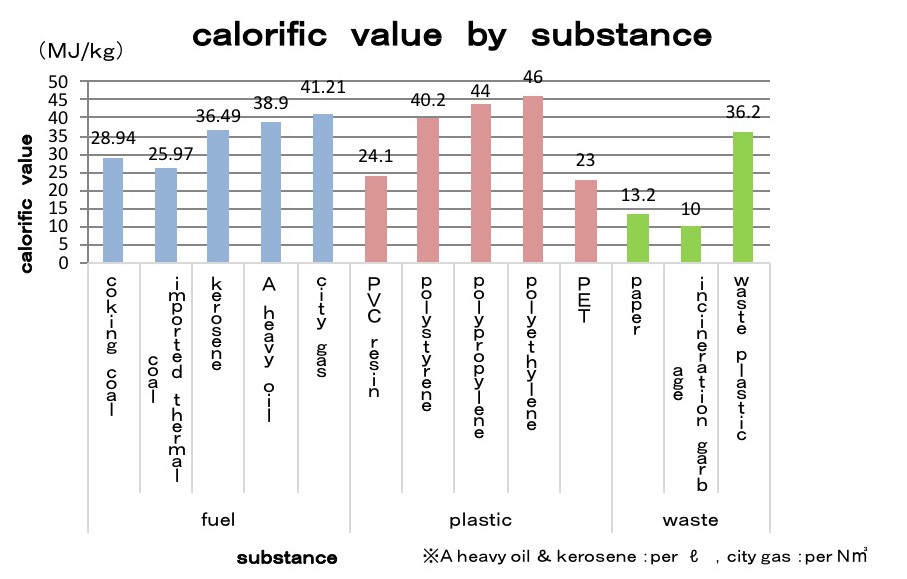日本語
For solving these problems
①Promote recycling
・Technological development for recycling
Let's look at material recycling, which accounts for nearly 30% of the three recycling methods. Out of 2.11 million tons of material recycled in 2017, 0.67 million tons were recycled from general waste plastics, while 1.44 million tons were from industrial waste plastics (from “the basic knowledge” Plastic Recycling Association of Japan). "General" means to plastic wastes from households, and "Industrial" means to plastic wastes discharged during the production and processing. Industrial plastic wastes are often used because the type of resin is clear and the amount is relatively stable, and it’s suitable to recycle by material recycling. On the other hand, plastic wastes in the home are mixed with various resins, so it’s difficult to recycle them efficiently. Therefore, it’s necessary to develop of the advanced technology for classifying plastics by type of resin, and of plastics that are easy to recycle. Also, it’s important to think about methods of recycling according to plastic materials in addition to technological development.
・Export the recycling technology to overseas
As mentioned in the “Survey to the Solution”, “Processes of flowing into the Sea”, in the developing nations of Asia and Africa, a large amount of plastics has gotten out into the sea because plastic processing systems have not been able to keep up with the rapid spread of using plastics.
Then, one of the things that developed countries including Japan can do is to export the processing systems of developed countries to developing countries that don’t have sufficient waste treatment systems. We will be able to reduce plastics that flow into the sea by promoting the technology expect of waste treatment systems. The example of the promotion all dispatching engineers from developing countries to developing countries and inviting government officials from developing countries to developed countries.
However, the lack of plastic processing is not necessarily caused only by the lack of recycling technology. People in these countries don’t have a habit of throwing away garbage at certain locations, and that is also hindering the process. For these reasons, it is important to make improvements in the ways that are related closely to the lives of developing countries, such as the education on environmental issues and the creation of systems.
・Eco-friendly recycling
PET bottles, which are a representative example of recycling, are mainly reused as raw materials for textile products such as uniforms and shirts and for egg packs. It’s estimated the effect of reducing the carbon dioxide by recycling recycled products would be about 2 kg per 1 kg of PET bottles, if it would be incinerated and then landfilled without recycling.
If 500,000 tons of PET bottles consumed every year are recycled, the carbon dioxide reduction effect is about 1 million tons, which is equivalent to about 0.1% of Japan's total carbon dioxide emissions.
It is a small percentage, but recycling can reduce carbon dioxide emissions. If the amount we use is the same, recycling is also a measure against global warming, but it does make sense to use it in large quantities. It is important to review lifestyles and take action through recycling.
〜 Is thermal recycling meaningless?〜
As mentioned in "Recycling" in the "Causes and reasons of plastic waste", some people think that thermal recycling is not recycling, and just burning. Then, is thermal recycling really meaningless? In thermal recycling, plastic wastes that have been landfilled without being recycled are recovered as thermal energy from incineration and used as new fuel. Plastic wastes include various types of plastics, and polyethylene, polypropylene and polystyrene have especially a high calorific value. Figure 1 below shows that waste plastic has a calorific value about 2.7 times as much as paper, and is not inferior to fuels such as coal and petroleum.
Because there is no large difference in the calorific value, waste-incineration-power generation using plastic wastes that continues to be generated is resource-friendly, compared to thermal power generation using limited fossil fuels. In addition, the demand for RPF, which is a mixture of plastic wastes and waste paper, is actually increasing as a substitute for fossil fuels such as coal and coke at paper companies. Therefore, these facts suggest that thermal recycling is an effective recycling method that uses plastic wastes as a new resource.
